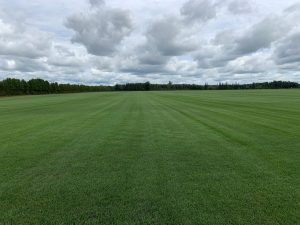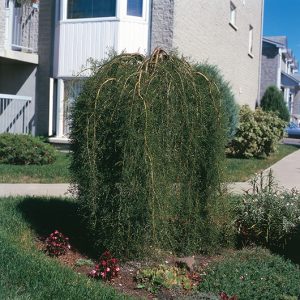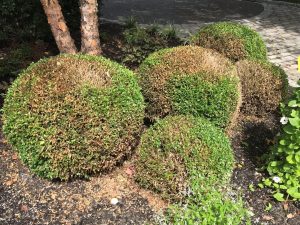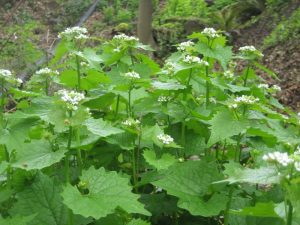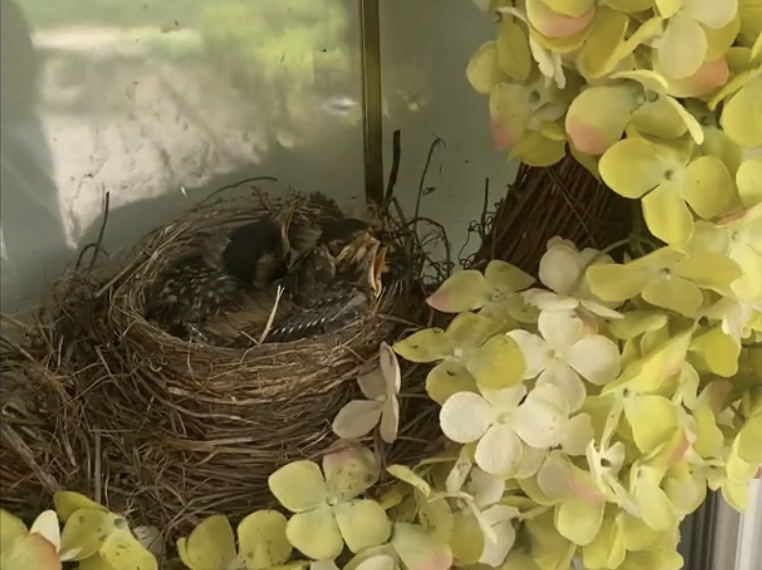
Hi, Dave here from Foxy Gardens in south western Ontario. Imagine – you step outside to greet the day and spot something unusual in the wreath hanging on your front door: twigs, moss, and a tiny, perfectly built bird’s nest.
At first glance, it might seem like a beautiful example of nature finding its way into modern life—but then come the droppings, the noise, and the awkward realization that you can’t use your front door anymore.
Here’s what I saw just the other day.
So…why do birds build nests in wreaths like this?
Especially in places like Ontario, where seasonal shifts and suburban homes intersect with rich wildlife habitats, this is a surprisingly common occurrence.
In this article, we’ll explore the reasons birds are drawn to decorative wreaths, the kinds of birds most likely to build there, and what you can do about it—ethically, legally, and practically.
Why Birds Choose Wreaths for Nesting
Birds don’t see your door décor the way you do. Where you see a charming seasonal touch, they see a dry, protected, elevated space that mimics their natural nesting environments. Here are the main reasons birds are drawn to wreaths:
1. Shelter and Safety
Front doors, especially those with awnings or overhangs, provide a surprising amount of shelter. Wreaths are often tucked under eaves, keeping nests dry and hidden from predators. For a small bird in early spring, this can feel like prime real estate.
2. Camouflage and Materials
Many wreaths use materials that resemble twigs, moss, leaves, and other natural nesting items. These features help nests blend in, keeping eggs and chicks hidden from predators. In fact, some birds prefer artificial greenery because it doesn’t rot or fall apart easily.
3. Low Human Traffic
You may not use your front door as much as you think—especially in Ontario homes where people enter through side doors, garages, or backyards. From a bird’s perspective, a wreath on a quiet, unused door is like finding an untouched patch of forest.
4. Warmth and Wind Protection
Ontario’s spring mornings can still be chilly. A wreath up against a door (which retains indoor heat) provides insulation. Plus, being mounted flat against a wall helps block wind from reaching the nest.
Common Birds That Nest in Wreaths (Ontario Focus)
While any small bird might attempt to use your wreath as a nesting site, a few species in Ontario are particularly known for this behavior:
🐦 House Finches
These small, brownish birds are among the most common wreath nesters. The females are especially drawn to cozy, elevated spots like hanging planters, porch lights—and yes, wreaths. House finches typically lay 2–6 eggs and may reuse the same spot more than once per season.
🐤 Sparrows
Adaptive and urban-savvy, sparrows will nest just about anywhere that offers protection. They’re quick to move in and don’t mind human noise if it stays relatively predictable.
🐣 American Robins
While robins usually prefer tree branches or gutters, some have been known to use wreaths or porch columns if they feel undisturbed.
🕊 Mourning Doves
In rare cases, mourning doves may build very flimsy nests in unlikely places. Their nests are less tidy, but you might still find one nestled among your door décor.
These birds are all protected under Canadian law, which is important to keep in mind before doing anything drastic.
Is It Bad to Let Birds Nest in Your Wreath?
This depends on your perspective—but there are both legal and practical issues to consider.
✅ Legal Protections
In Canada, most native bird species (including robins, finches, and sparrows) are protected under the Migratory Birds Convention Act. This means it is illegal to remove or disturb a nest containing eggs or chicks. Even if it’s inconvenient, the law prioritizes the welfare of nesting birds.
🚫 Practical Issues
-
Mess: Droppings, feathers, and nest debris often collect beneath the wreath.
-
Noise: Chicks chirp loudly for food once hatched, and parent birds flutter anxiously nearby.
-
Blocked access: Many homeowners feel uncomfortable using the door while the nest is active.
Despite these drawbacks, nesting season doesn’t last forever. Most birds will leave the nest in 2–4 weeks, after which you can clean up and make changes to prevent it from happening again.
What To Do If Birds Nest in Your Wreath
If you discover a bird building or already nesting in your wreath, here’s how to respond responsibly:
1. Do Not Remove the Nest
Once eggs are laid, the law is clear: don’t interfere. Even before eggs arrive, it’s often best to avoid confrontation unless you’re certain it’s legal and safe to do so.
2. Mark the Door As “Do Not Use”
Place a note or tape across the door to keep people from opening it accidentally. Use a different entry if possible to minimize stress to the birds.
3. Keep Pets and Kids Away
Dogs and cats are natural threats to nesting birds. Keep them away from the area until the chicks have fledged (left the nest).
4. Observe From a Distance
Many Ontario families turn this into a learning opportunity. Watching the nesting cycle—from egg-laying to baby birds flying off—is a rare treat.
5. Clean Up After the Birds Leave
Once the nest is empty and clearly abandoned, you may remove it and clean the wreath (or dispose of it). Disinfect the door area to remove mites or parasites.
How To Prevent Birds From Nesting in Wreaths
Prevention is easier than removal—and fully legal. If you don’t want a repeat next year, here are a few strategies that work for Ontario homes:
🧹 Remove Wreaths During Nesting Season
April through July is prime nesting season in Ontario. Store wreaths indoors during this time, especially if your home is surrounded by trees, shrubs, or green space.
🌟 Use Non-Natural Materials
Metallic, glossy, or brightly coloured wreaths are less appealing to birds than those made from twigs and moss. Avoid anything that looks like a comfy nest starter.
🎀 Add Bird Deterrents
-
Tie reflective tape or foil ribbons to your wreath (birds dislike flashy movement).
-
Spray wreaths with citrus oil or cinnamon—natural repellents that don’t harm birds.
-
Install a small plastic owl or fake predator nearby.
🚪 Change Your Entry Habits
Regular use of the door with the wreath discourages birds from nesting there. Simply opening and closing it daily can be enough to make them look elsewhere.
Alternatives to Wreaths That Won’t Attract Birds
If you love decorating your door but don’t want to attract wildlife, consider:
-
Vertical welcome signs
-
Hanging lanterns or wind chimes
-
Dried lavender bundles (which repel insects and birds)
-
Painted wood art
These options look great but offer fewer nesting benefits.
Final Thoughts
Birds building nests in wreaths is a charming but complicated issue for Ontario homeowners. On one hand, it’s an endearing reminder of nature’s persistence. On the other, it can be messy, inconvenient, and even illegal to disrupt once it begins.
By understanding why birds choose wreaths, how to respond ethically, and how to prevent future nesting, you can strike a balance between enjoying your home and respecting the wildlife that shares it.



